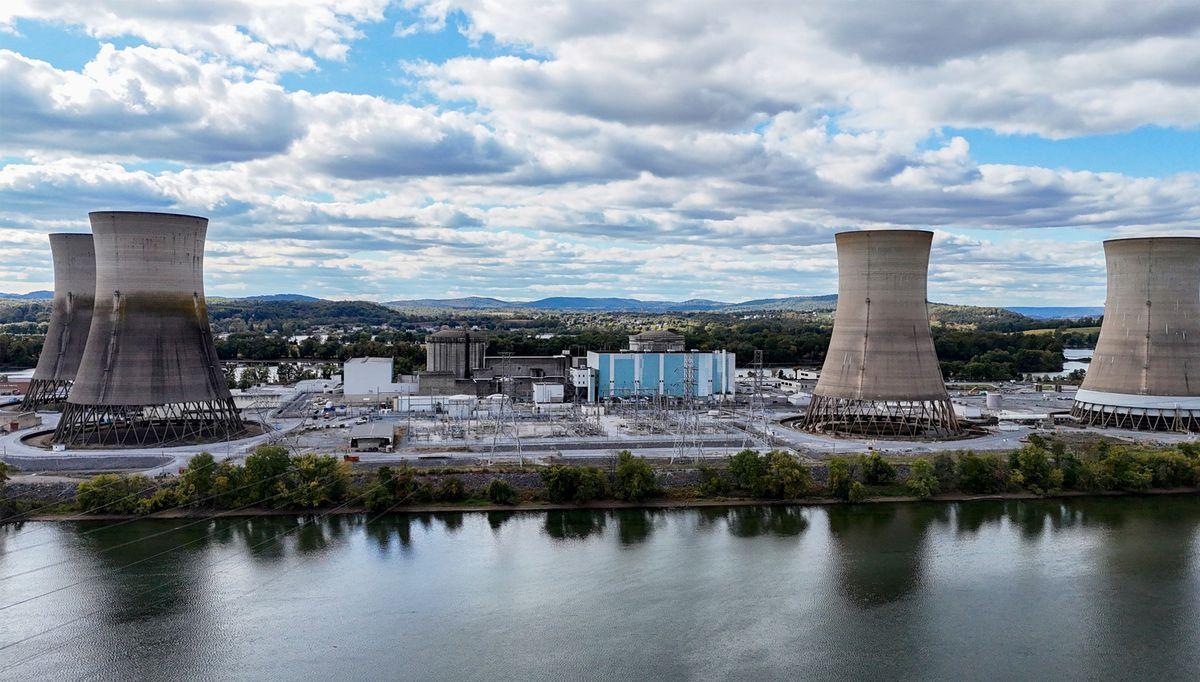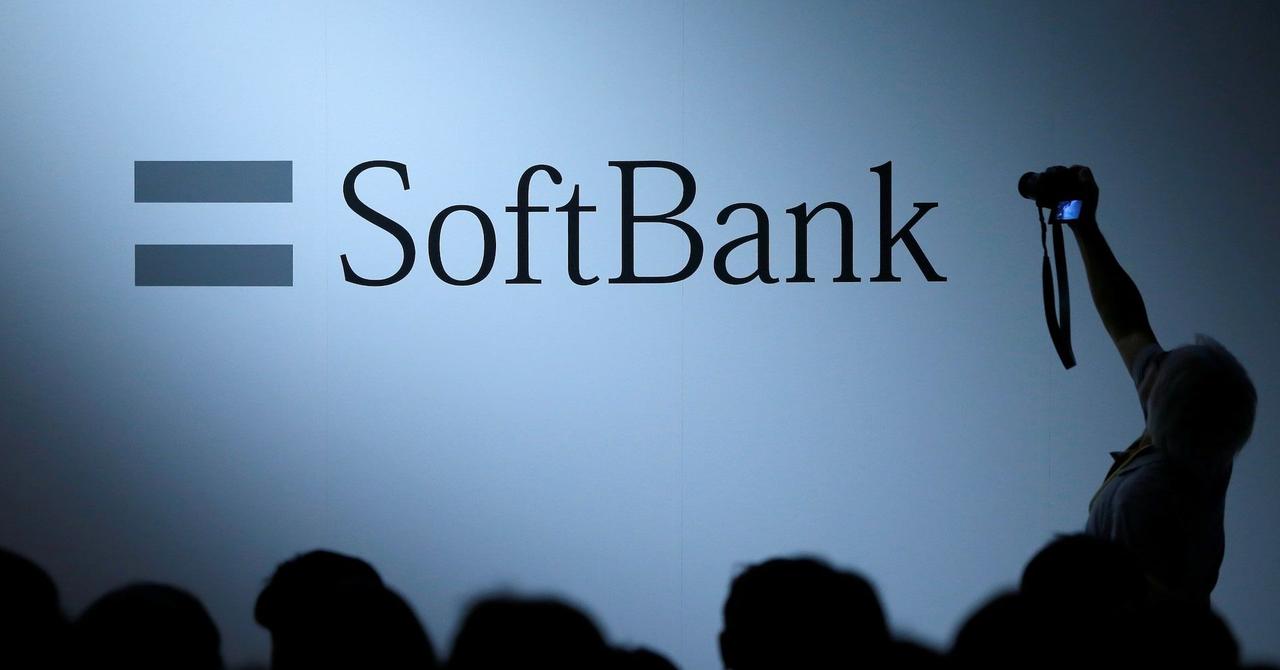Google Partners with PJM to Deploy AI for Streamlining Electrical Grid Connections
5 Sources
5 Sources
[1]
Google thinks AI can untangle the electrical grid's bureaucracy | TechCrunch
There has been a lot of angst among tech companies and policymakers about a looming power shortage on the grid due in no small part to the rise in AI. But what's less known is that there are terawatts of new capacity waiting to be approved for connection to the grid, and unknotting the bureaucracy could go a long way to solving the problem. All grid operators in the U.S. face the similar backlogs, but few are as significant as that of PJM, which manages the flow of electricity in the mid-Atlantic states, Ohio, and eastern Kentucky. Now, Google and PJM are hoping that AI can help speed things along. The two organizations announced Thursday a partnership, along with Alphabet "moonshot" Tapestry, to develop AI models to streamline key parts of the application process on both sides of the transaction. They'll get assistance with data verification and submit projects through new, centralized planning tools, which will also help PJM analyze how best to integrate variable power sources like renewables. Because of the surge in computing demand from AI, tech companies have been racing to secure generating capacity. Amazon, Google, Meta, and Microsoft have all either invested in or pledged to buy significant amounts of nuclear power. But they've also been steadily snapping up solar power in large quantities. The interconnection problem is wonky, to be sure, but solving it could alleviate concerns about underpowered data centers. Nationwide, 2.6 terawatts of generating capacity are waiting for approval, according to the Lawrence Berkeley Lab. That's double what every U.S. power plant combined is capable of generating today. PJM's queue is by far the longest. There are over 3,000 active requests to connect 286.7 gigawatts of capacity in the region, according to the Berkeley Lab. Overwhelmed, the organization stopped accepting applications for new connections in 2022 and won't review new requests until mid-2026. Renewables have been penalized the most by the sclerotic process. Nationwide, over 1 terawatt each of solar and storage are waiting for permission to send electrons to the grid. Even the queue PJM region, which isn't typically considered a hotbed of renewable development, is dominated by the two clean power sources: Just 2.4% of applicants are natural gas power plants. The PJM-managed grid has historically been dominated by fossil fuels. Over the last decade or so, natural gas-fired power plants have displaced coal as fracking drove gas costs down. The grid operator also recently developed a new approval process that critics argue allows for fossil fuel plants to unfairly skip the line ahead of renewable projects. In unveiling the partnership with Google, PJM Executive Vice President Aftab Khan said that the organization's grid will remain "fuel agnostic," according to E&E News. Meanwhile, Google spokesperson Amanda Peterson Corio maintained that its was "committed to our goals to decarbonize our electricity footprint."
[2]
Google deploys AI to speed up connections at PJM, largest US power grid
NEW YORK, April 10 (Reuters) - Alphabet Inc's (GOOGL.O), opens new tab Google unit is partnering with the largest electrical grid operator in North America, PJM Interconnection, to roll out artificial intelligence technologies aimed at getting new power supplies connected faster, the company said on Thursday. The collaboration is the first time AI would be used to comprehensively manage an interconnection queue. Electricity demand has been rising as Big Tech builds more data centers to train and deploy artificial intelligence. "The industry has been talking about building smarter grids for well over a decade, and now with AI, we have a real opportunity to turn discussion into action," Amanda Peterson Corio, Google's data center energy lead, said at a press conference. Wait times have grown to historic lengths in recent years for connecting the country's grids to new electricity supplies generated from sources like wind, solar and natural gas. Those delays have worsened an electricity supply crunch in many parts of the country, pushing up power bills and raising the risk of blackouts, as old power plants retire faster than new supplies connects. Google, in partnership with the Alphabet-backed Tapestry, says it can help eliminate at least some of the wait by using artificial intelligence to synthesize information and automate parts of the review and planning processes for projects in line to connect to PJM. "This is really about automating a lot of the things that are being laboriously reviewed," said Page Crahan, General Manager of Tapestry, which will work with PJM to develop AI tools and models that will be rolled out in 2025 and phased in over the course of several years. Initially, the technology will be used to automate parts of processes currently done by hand by grid planners, including a review of applications to determine whether a project seeking to connect to the grid is viable. Over time, the collaboration between Google, Tapestry and PJM will develop a model of the PJM grid like a Google Maps for grid information, "bringing in different layers that planners might need to see in a single toggle on and off view to guide faster decisions, introduce new insights, hopefully find efficiencies in those ways," Crahan said. It remained too early to say how working with Google would cut down on times to add new power plant supply to the system, said Aftab Khan, executive vice president of operations, planning and security for PJM. PJM controls the electrical system that covers 67 million people in the U.S. PJM's territory includes northern Virginia, the world's largest data center hub. Reporting by Laila Kearney; Editing by David Gregorio Our Standards: The Thomson Reuters Trust Principles., opens new tab Suggested Topics:Climate & EnergyRegulatory OversightGovernanceGrid & InfrastructureClean Energy
[3]
AI is fueling a surge in electricity demand, but Google has a solution: More AI
The gap between Google's Gemini and Assistant teams just got a whole lot wider Summary Google partners with PJM to improve electricity grid. AI will ideally streamline and accelerate the grid interconnection process. Project aims to meet growing electricity demands and lower costs in the eastern US. AI sucks down a lot of electricity, and Google's all-in on AI. In July, Google's 2024 environmental report revealed that the company's emissions had risen nearly 50 percent since 2019, primarily due to increased electricity use at AI data centers. Today, the company announced a partnership aimed at creating a "smarter, more reliable electricity system" -- by leveraging more AI. The project, as Google President & Chief Investment Officer Ruth Porat states in a post on Google's Keyword blog, is nominally about "making electricity more reliable and affordable for the 67 million people" serviced by project partner PJM Interconnection, a US electrical grid operator comprising more than 1,000 member companies across the Mid-Atlantic and Midwest regions. But in the long run, it's meant to help meet growing electricity demands spurred by ever-growing use of power-hungry generative AI tools. Google cites a report from Berkeley Lab's Energy Markets & Policy department that says the US power grid's "current interconnection process" is a significant bottleneck in deploying new electric generation. This newly announced partnership between PJM and an Alphabet moonshot called Tapestry will use AI to "streamline and accelerate the interconnection application and critical parts of the verification process," ideally bringing more capacity online in more places, faster. Google also says this project will help "meet the region's electricity needs as affordably as possible." Using AI to mitigate the cost of AI As big tech's AI push barrels ahead, energy and emissions considerations are going to be more and more crucial. According to Google, the multi-year partnership will improve access to power and lower costs across the region serviced by PJM by connecting new energy sources to the grid more efficiently. Google says that "a large portion" of PJM's interconnection queue backlog comprises variable energy sources like wind and solar. In addition to this project, Google's also "accelerating new technologies" for electricity generation, including geothermal and nuclear generation. Hey, it beats powering AI data centers with more coal.
[4]
Our investment in AI-powered solutions for the electric grid
Today, Google announced our biggest step yet to use AI for building a stronger, more resilient electricity system. We're collaborating with PJM Interconnection, the largest grid operator in North America, and Tapestry, an Alphabet incubated moonshot. Tapestry, powered by Google Cloud and Google DeepMind, will build on its core technology and develop a new set of AI tools and models. The technology will intelligently manage and optimize interconnecting power generation to the PJM electric grid, which spans the District of Columbia and 13 states across much of the industrial Mid-Atlantic and Midwest. The technology will help PJM connect energy sources to its grid much faster, with the specific goal of making electricity more reliable and affordable for the 67 million people PJM serves. Building the stronger, more resilient grid of tomorrow The United States has the opportunity for a new era of innovation and growth, with the application of AI. Realizing this opportunity will require significant investment in new electricity infrastructure. In 2024, the Federal Energy Regulatory Commission's five-year demand growth forecast more than tripled compared to the same forecast the prior year, with the United States peak energy demand expected to grow by 128 GW before the end of the decade. Advanced applications of AI bring a new opportunity to address the growing backlog of power generation projects in the U.S. By the end of 2023, the backlog was estimated to be more than double the size of the total installed capacity of the U.S. power fleet, with 2,600 gigawatts (GW) of potential capacity waiting to interconnect to the organized power grids, according to Lawrence Berkeley National Laboratory. Grid operators are adapting their databases, models and evaluation tools to manage a substantial increase in interconnection requests, which have risen from a few dozen annually to thousands. Using AI to automate and optimize interconnection AI can play a pivotal role in improving and expanding the U.S. electricity system while maintaining reliability and security. We are bringing together the power of Alphabet, including Tapestry, Google Cloud and Google DeepMind, to build and deliver a set of collaborative AI tools that will enable PJM to make faster decisions with greater confidence. With the application of Tapestry's tools and insights, the time it takes to process new project applications will significantly reduce, allowing new capacity to come online far faster. This multi-year initiative aims to drive key improvements in the PJM region by: Powering our electricity demand responsibly Creative solutions from across the private and public sectors are crucial to ensure the U.S. has the energy capacity, affordability and reliability needed to capitalize on the opportunity for growth. Alphabet is committed to doing its part to lead in this new era with multiple execution efforts underway. In addition to this first-of-its-kind collaboration with PJM to apply AI for the grid, we are accelerating new technologies, such as enhanced geothermal and advanced nuclear. We're also exploring new development and procurement approaches that can deliver new, firm electricity to help power Google's operations and build a smarter, more affordable electricity system for everyone.
[5]
Google deploys AI to speed up connections at PJM, largest US power grid
NEW YORK (Reuters) - Alphabet Inc's Google unit is partnering with the largest electrical grid operator in North America, PJM Interconnection, to roll out artificial intelligence technologies aimed at getting new power supplies connected faster, the company said on Thursday. The collaboration is the first time AI would be used to comprehensively manage an interconnection queue. Electricity demand has been rising as Big Tech builds more data centers to train and deploy artificial intelligence. "The industry has been talking about building smarter grids for well over a decade, and now with AI, we have a real opportunity to turn discussion into action," Amanda Peterson Corio, Google's data center energy lead, said at a press conference. Wait times have grown to historic lengths in recent years for connecting the country's grids to new electricity supplies generated from sources like wind, solar and natural gas. Those delays have worsened an electricity supply crunch in many parts of the country, pushing up power bills and raising the risk of blackouts, as old power plants retire faster than new supplies connects. Google, in partnership with the Alphabet-backed Tapestry, says it can help eliminate at least some of the wait by using artificial intelligence to synthesize information and automate parts of the review and planning processes for projects in line to connect to PJM. "This is really about automating a lot of the things that are being laboriously reviewed," said Page Crahan, General Manager of Tapestry, which will work with PJM to develop AI tools and models that will be rolled out in 2025 and phased in over the course of several years. Initially, the technology will be used to automate parts of processes currently done by hand by grid planners, including a review of applications to determine whether a project seeking to connect to the grid is viable. Over time, the collaboration between Google, Tapestry and PJM will develop a model of the PJM grid like a Google Maps for grid information, "bringing in different layers that planners might need to see in a single toggle on and off view to guide faster decisions, introduce new insights, hopefully find efficiencies in those ways," Crahan said. It remained too early to say how working with Google would cut down on times to add new power plant supply to the system, said Aftab Khan, executive vice president of operations, planning and security for PJM. PJM controls the electrical system that covers 67 million people in the U.S. PJM's territory includes northern Virginia, the world's largest data center hub. (Reporting by Laila Kearney; Editing by David Gregorio)
Share
Share
Copy Link
Google, in collaboration with PJM Interconnection and Alphabet's Tapestry, is leveraging AI to address the backlog in power grid connections, aiming to expedite the process of adding new energy sources to the grid.

Google and PJM Interconnection Announce AI Partnership
Google, in collaboration with PJM Interconnection, the largest electrical grid operator in North America, has announced a groundbreaking partnership to deploy artificial intelligence (AI) technologies aimed at expediting the connection of new power supplies to the grid
1
2
. This initiative comes at a crucial time when the demand for electricity is surging, largely due to the rapid expansion of data centers for AI training and deployment.The Challenge: Grid Connection Backlogs
The U.S. power grid is facing significant challenges in connecting new electricity supplies to the grid. According to the Lawrence Berkeley Lab, there are approximately 2,600 gigawatts (GW) of generating capacity waiting for approval nationwide, which is double the current combined capacity of all U.S. power plants
1
. PJM's queue is particularly congested, with over 3,000 active requests to connect 286.7 GW of capacity in the region1
.AI Solution: Streamlining the Interconnection Process
The partnership between Google, PJM, and Alphabet's "moonshot" Tapestry aims to develop AI models that will streamline key parts of the application process for grid connections
1
2
. The AI-powered tools will:- Automate data verification
- Provide centralized planning tools for project submission
- Assist PJM in analyzing the integration of variable power sources like renewables
Page Crahan, General Manager of Tapestry, explained that the AI technology will automate many of the processes currently done manually by grid planners
2
. This includes reviewing applications to determine project viability and developing a comprehensive model of the PJM grid, similar to a "Google Maps for grid information"2
5
.Timeline and Implementation
The AI tools and models developed through this collaboration are set to be rolled out in 2025 and phased in over several years
2
5
. While the exact reduction in wait times for new power plant connections remains uncertain, the initiative aims to significantly accelerate the process2
.Implications for Renewable Energy
The current backlog in grid connections has disproportionately affected renewable energy projects. Nationwide, over 1 terawatt each of solar and storage capacity is waiting for permission to connect to the grid
1
. Even in the PJM region, which isn't typically considered a hotbed of renewable development, clean power sources dominate the queue, with only 2.4% of applicants being natural gas power plants1
.Related Stories
Broader Context: AI and Energy Demand
This partnership comes at a time when big tech companies, including Google, are facing increased scrutiny over the energy consumption of their AI operations. Google's 2024 environmental report revealed that the company's emissions had risen nearly 50% since 2019, primarily due to increased electricity use at AI data centers
3
.Future Outlook
The collaboration between Google, PJM, and Tapestry represents a significant step towards creating a "smarter, more resilient electricity system"
4
. By leveraging AI to address the challenges in grid connections, the project aims to meet growing electricity demands, lower costs, and potentially accelerate the integration of renewable energy sources into the grid1
3
4
.As the United States faces the prospect of significant growth in peak energy demand, estimated to increase by 128 GW before the end of the decade
4
, innovative solutions like this AI-powered initiative may play a crucial role in shaping the future of the country's energy infrastructure.References
Summarized by
Navi
[5]
Related Stories
Google Agrees to Pause AI Workloads During Power Demand Spikes
05 Aug 2025•Technology

Google's $800M Clean Energy Initiative: Powering AI-Driven Data Centers with Renewable Sources
11 Dec 2024•Business and Economy

AI-Driven Power Demand Surge Strains America's Largest Grid, Threatening Price Hikes and Blackouts
09 Jul 2025•Technology

Recent Highlights
1
Meta acquires Manus for $2 billion, adding revenue-generating AI agents to its platforms
Business and Economy

2
Nvidia locks in $20 billion Groq deal, securing AI chip rival's technology and talent
Business and Economy

3
Geoffrey Hinton warns AI job replacement will accelerate in 2026 as systems gain new capabilities
Technology





